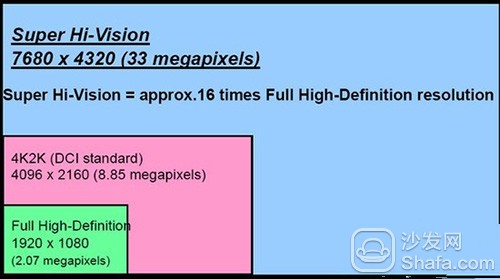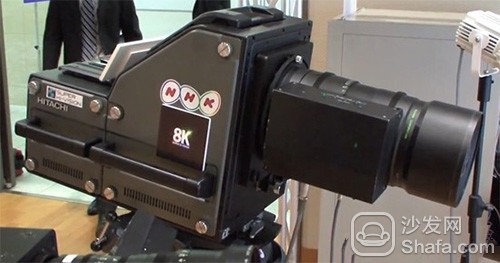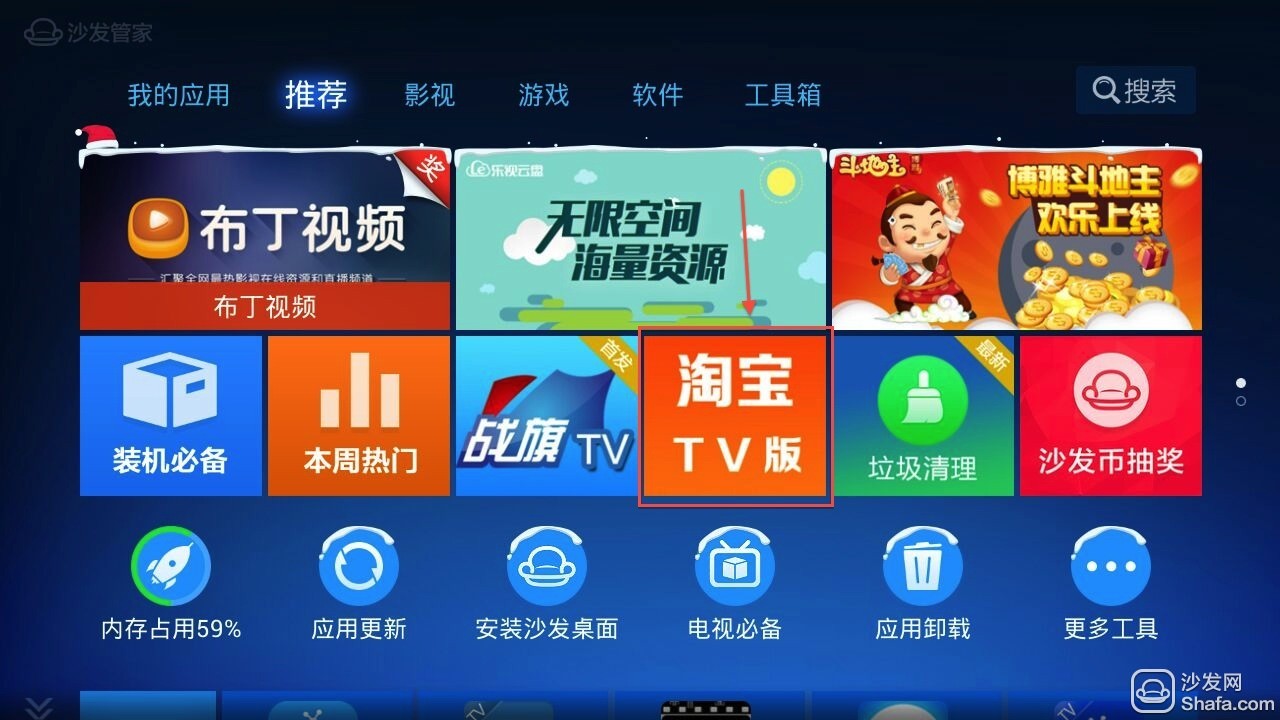This year's CES show is as lively as ever. 4K TV has not yet been completely popularized. Samsung, LG and a number of Japanese manufacturers have already pushed 8K TVs. Both Sharp LG and Sony released their 8K large-screen TVs at this exhibition, which made everyone sincerely lament that technological progress is so fast that people can't accept it.
As a veteran TV manufacturer, Sharp launched its own brand new TV lineup in 2015, including an 80-inch AQUOS Beyond Ultra HDTV. This product uses a unique pixel technology, directly divides two vertical pixels into two parts, so that each pixel can produce its own color value, which directly led to a screen resolution close to 8K (7680×4320) ) Pixels.
And other home Japanese and South Korean manufacturers, LG and Sony are not willing to post. At this CES 2015 conference, LG not only released the top 4K OLED TV with WRGB four-color technology, but also brought an 8K TV! This 8K TV uses ColorPrime display technology, the panel is LG Display proud IPS hard screen technology, there are special video on site. As the originator of 4K, Sony can't lag behind. The resolution of STE-RGB-OLED 8K TV reached 8192×4320.
But so far, 8K TVs haven't made much progress compared to last year's conceptual products, and they still haven't entered the market on a large scale.
8K Application and Constraints
What is 8K?
Having said so much, we must first explain the 8K concept to everyone. Speaking of 8K is easy to think of 4K, for most of the latter people are no longer strangers. 8K, the same as 4K, belongs to the next generation TV video technology: SuperHi-Vision. Submitted by the Japan Broadcasting Association’s Science and Technology Research Laboratory in 2006 to the International Telecommunication Union and the Society of Motion Picture and Television Engineers and as a draft recommendation for UHDTV, including two different standards: UHDTV1 and UHDTV2, namely 4K and 8K.
Up to 76,804,320 pixels, which is 16 times larger than the 1920×1080 resolution, and 4 times the 4K resolution. Generally, large Blu-ray movies can only account for 1/16 of the screen under 8K resolution. Compared to 4K, 8K TV has more excellent video effects. It can be said that the arrival of 8K is the highest level of current television video technology, and it is also the development direction of TV video technology in the future.
The application of 8K technology
If the 8K technology is so outstanding, can it be immediately popularized on a large scale? If it is not actually used, it is just an air loft and it has no practical value. For now, in addition to television, 8K technology has begun to be used in projectors and video cameras. Last year, the world's first 8K ultra-high-definition projector DLA-VS4800 was launched and launched by Japan Victory Company. The projector has an ultra-high contrast ratio of 1,000,000:1. Combined with JVC's exclusive nanowire grid technology, the projector displays real dark bits and reproduces realistic images. However, this device is priced at 1.6 million yuan, I am afraid that very few users can accept, mainly for the observatory, air traffic control center, flight simulators, museums, virtual simulation, CAD image design, multi video conferencing, Surveillance images and the like require large-scale, ultra-high-precision projection image applications.
On the camera side, Japan’s NHK TV station launched its first portable 8K camera on May 31 last year. The camera comes with a 33-megapixel sensor and the body is roughly a 8 cm square. NHK also launched a full-size 8K Super Hi-Vision camera before this, but it is a bit bulky. The new 8K camera can only shoot 60fps video compared to the large 120fps frame rate camera previously developed by NHK.
8K technology constraints reality
Although everyone knows that 8K TV is the future direction of development, in the short term, there are still many practical factors that have constrained the rapid popularity of 8K TV. Since 8K video technology has very strict rigid standards, 7680×4320 progressive scan resolution, 22.2 channels, and naked-eye 3D display technology, the promotion of 8K TV is not an overnight event.
First, the price reason: Because there is no volume production, new products are often priced very high. Although the price of Sharp and other 8K new products is still unknown, but from the previous JVC DLA-VS4800 overseas sales can be seen, its 1.6 million yuan worth, can scare away more than 99% of consumers.
The second photographic equipment has not yet been popularized. Although the 8K camera has been born, it has not yet been widely used. The 8K video technology has a resolution of 33 million pixels, and most full-frame SLR cameras on the market today are about 24 million pixels. In other words, even if it is to put photos, most of the SLR camera photo size can not meet the requirements of 8K video technology, let alone require the video screen.
Third, video storage space is too large. In the process of capturing 8K video using the JVC Super Hi-Vision camera video, it was found that only 8 minutes of video in a length of 1 minute required 194 GB of storage space. Such a huge volume, whether it is a Blu-ray disc or a TV signal, is a very big challenge!
The fourth is higher requirements for video components such as video processors. The current mainstream image processor must redesign the image processor to avoid the problems of high heat generation and huge data processing.
to sum up
Although these 8K televisions represent the direction of technological advancement, in the short term, it is still “what to say is not easy to say love youâ€, and it is not even a question of money. In fact, 4K TV is enough for consumers. Prior to the editor’s article, the editor mentioned that 4K has substantial value on large-screen TVs of 65 inches or more. 4K is still the case, not to mention 8K, how many families can put a 100-inch or even bigger TV?

And other home Japanese and South Korean manufacturers, LG and Sony are not willing to post. At this CES 2015 conference, LG not only released the top 4K OLED TV with WRGB four-color technology, but also brought an 8K TV! This 8K TV uses ColorPrime display technology, the panel is LG Display proud IPS hard screen technology, there are special video on site. As the originator of 4K, Sony can't lag behind. The resolution of STE-RGB-OLED 8K TV reached 8192×4320.
But so far, 8K TVs haven't made much progress compared to last year's conceptual products, and they still haven't entered the market on a large scale.
8K Application and Constraints
What is 8K?
Having said so much, we must first explain the 8K concept to everyone. Speaking of 8K is easy to think of 4K, for most of the latter people are no longer strangers. 8K, the same as 4K, belongs to the next generation TV video technology: SuperHi-Vision. Submitted by the Japan Broadcasting Association’s Science and Technology Research Laboratory in 2006 to the International Telecommunication Union and the Society of Motion Picture and Television Engineers and as a draft recommendation for UHDTV, including two different standards: UHDTV1 and UHDTV2, namely 4K and 8K.

Up to 76,804,320 pixels, which is 16 times larger than the 1920×1080 resolution, and 4 times the 4K resolution. Generally, large Blu-ray movies can only account for 1/16 of the screen under 8K resolution. Compared to 4K, 8K TV has more excellent video effects. It can be said that the arrival of 8K is the highest level of current television video technology, and it is also the development direction of TV video technology in the future.
The application of 8K technology
If the 8K technology is so outstanding, can it be immediately popularized on a large scale? If it is not actually used, it is just an air loft and it has no practical value. For now, in addition to television, 8K technology has begun to be used in projectors and video cameras. Last year, the world's first 8K ultra-high-definition projector DLA-VS4800 was launched and launched by Japan Victory Company. The projector has an ultra-high contrast ratio of 1,000,000:1. Combined with JVC's exclusive nanowire grid technology, the projector displays real dark bits and reproduces realistic images. However, this device is priced at 1.6 million yuan, I am afraid that very few users can accept, mainly for the observatory, air traffic control center, flight simulators, museums, virtual simulation, CAD image design, multi video conferencing, Surveillance images and the like require large-scale, ultra-high-precision projection image applications.

8K camera has been born
On the camera side, Japan’s NHK TV station launched its first portable 8K camera on May 31 last year. The camera comes with a 33-megapixel sensor and the body is roughly a 8 cm square. NHK also launched a full-size 8K Super Hi-Vision camera before this, but it is a bit bulky. The new 8K camera can only shoot 60fps video compared to the large 120fps frame rate camera previously developed by NHK.
8K technology constraints reality
Although everyone knows that 8K TV is the future direction of development, in the short term, there are still many practical factors that have constrained the rapid popularity of 8K TV. Since 8K video technology has very strict rigid standards, 7680×4320 progressive scan resolution, 22.2 channels, and naked-eye 3D display technology, the promotion of 8K TV is not an overnight event.
First, the price reason: Because there is no volume production, new products are often priced very high. Although the price of Sharp and other 8K new products is still unknown, but from the previous JVC DLA-VS4800 overseas sales can be seen, its 1.6 million yuan worth, can scare away more than 99% of consumers.

8K big screen TV debut CES
The second photographic equipment has not yet been popularized. Although the 8K camera has been born, it has not yet been widely used. The 8K video technology has a resolution of 33 million pixels, and most full-frame SLR cameras on the market today are about 24 million pixels. In other words, even if it is to put photos, most of the SLR camera photo size can not meet the requirements of 8K video technology, let alone require the video screen.
Third, video storage space is too large. In the process of capturing 8K video using the JVC Super Hi-Vision camera video, it was found that only 8 minutes of video in a length of 1 minute required 194 GB of storage space. Such a huge volume, whether it is a Blu-ray disc or a TV signal, is a very big challenge!
The fourth is higher requirements for video components such as video processors. The current mainstream image processor must redesign the image processor to avoid the problems of high heat generation and huge data processing.
to sum up
Although these 8K televisions represent the direction of technological advancement, in the short term, it is still “what to say is not easy to say love youâ€, and it is not even a question of money. In fact, 4K TV is enough for consumers. Prior to the editor’s article, the editor mentioned that 4K has substantial value on large-screen TVs of 65 inches or more. 4K is still the case, not to mention 8K, how many families can put a 100-inch or even bigger TV?
Recommended installation sofa butler, download address: http://app.shafa.com/

